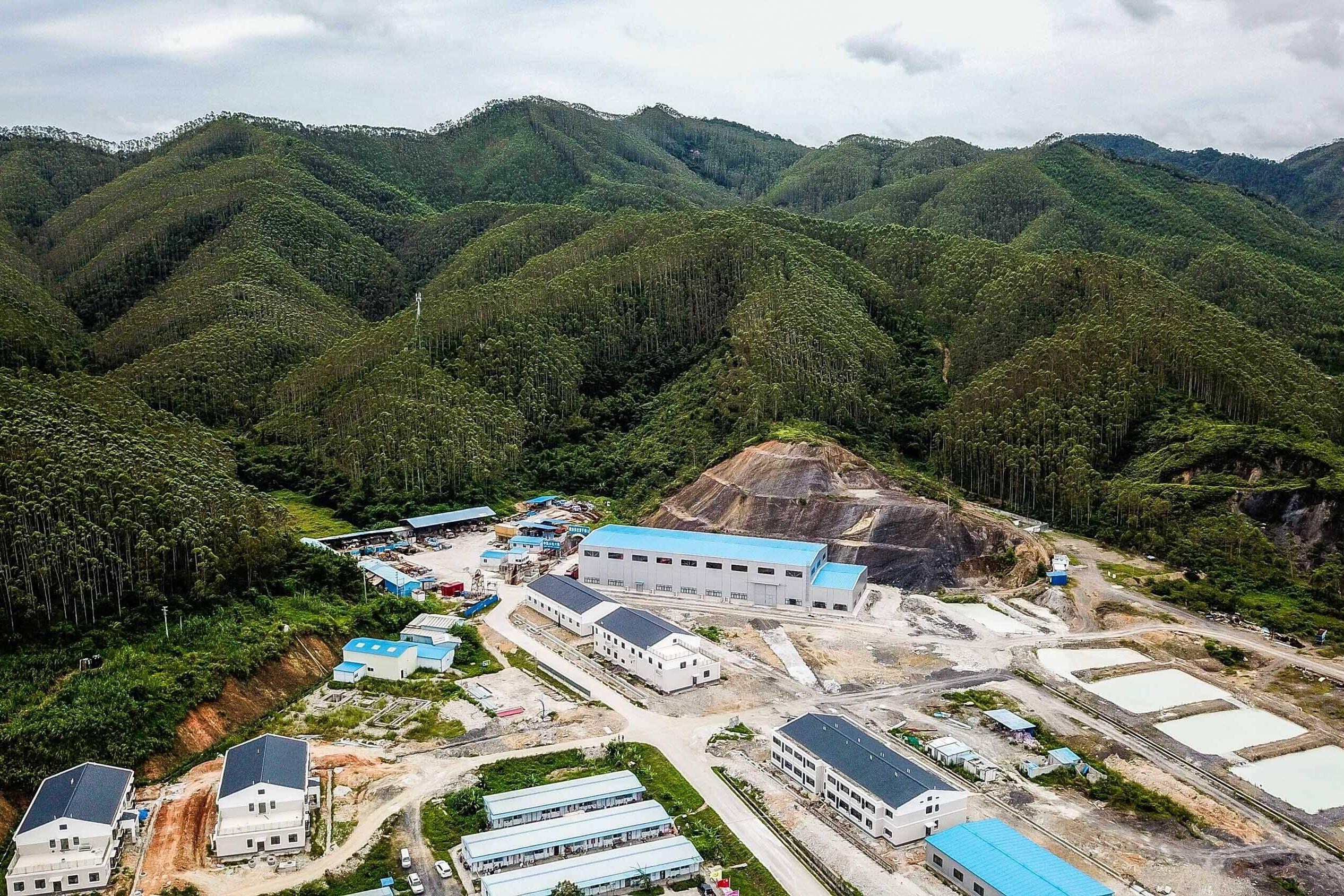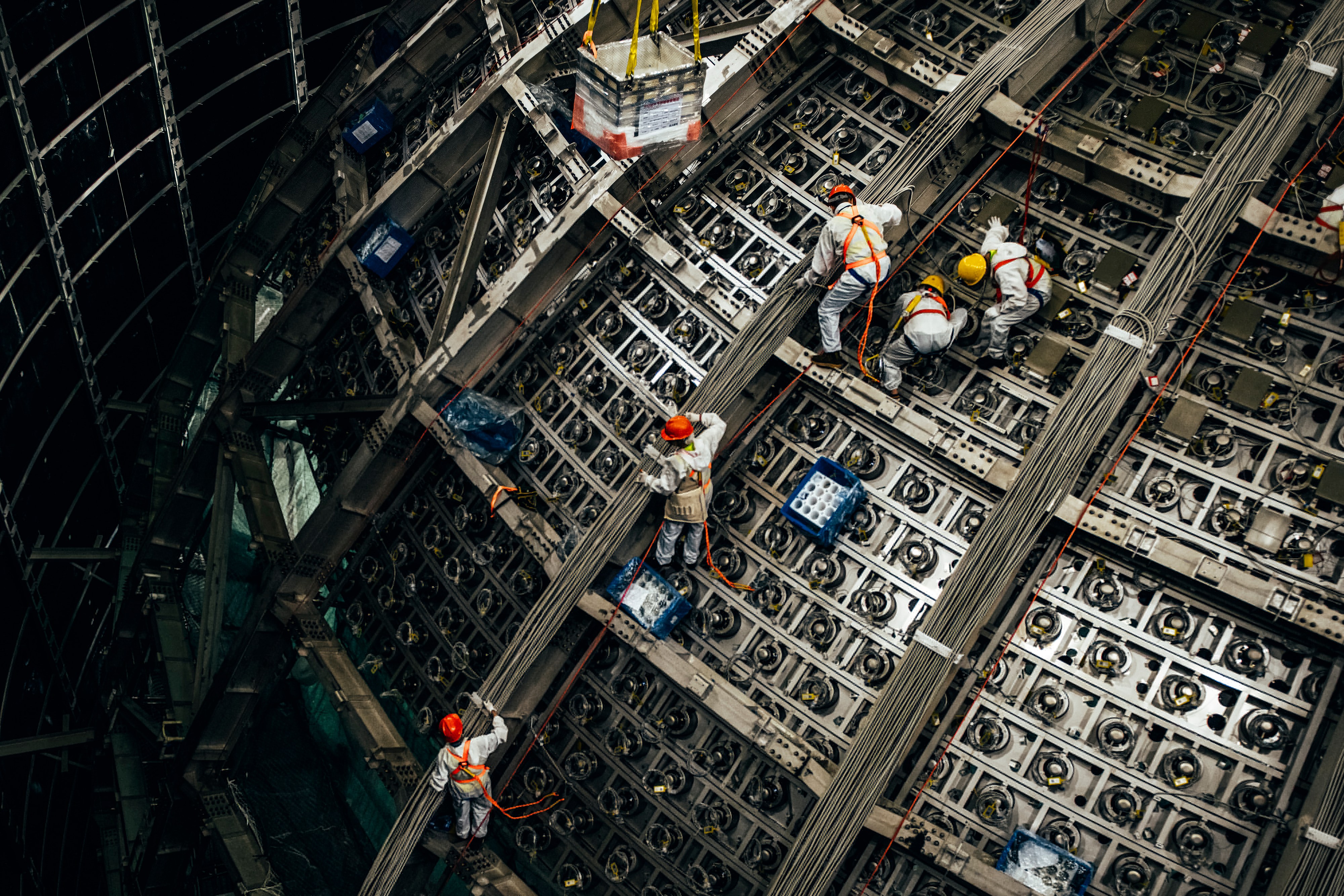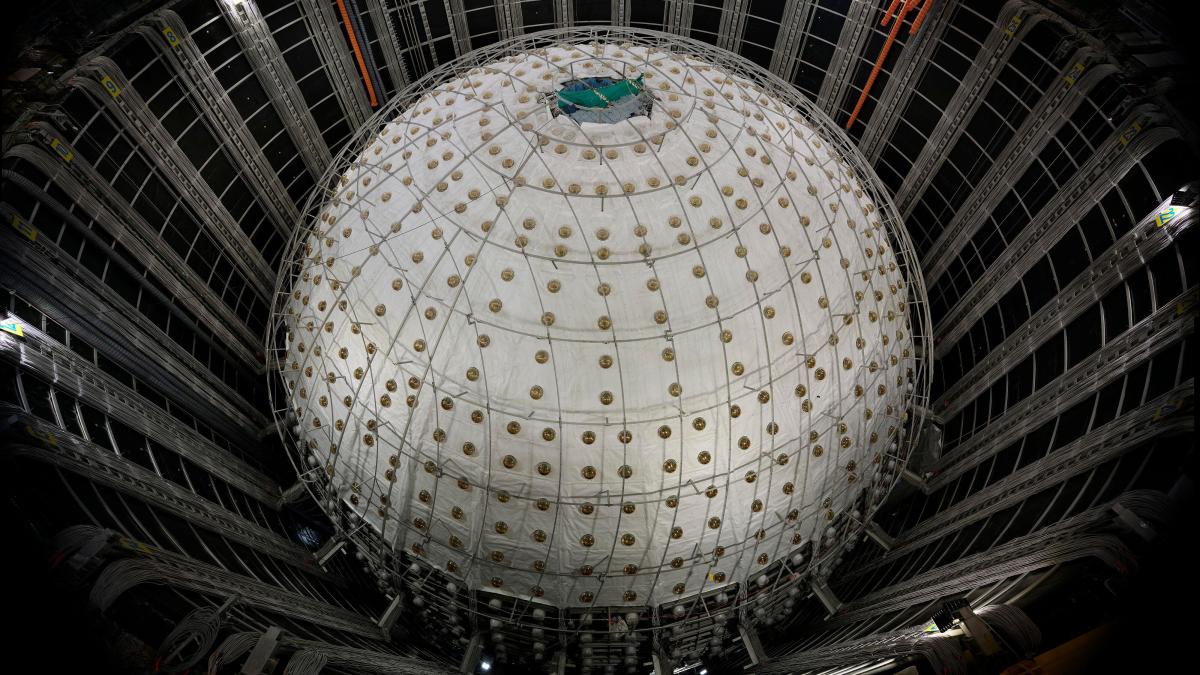They are sometimes called “ghost particles”, so mysterious are they. And anyone who does not know what subatomic neutrinos are or how they work can have some reassurance: until now, the world’s finest minds have not been quite sure either.
But if Wang Yifang of the Chinese Academy of Sciences, 700 physicist collaborators from around the world, and a huge sphere filled with liquid buried deep under a lush green hillside get their way, that will soon change.
As of now, 20,000 tonnes of a substance known as a liquid scintillator, contained in the sphere, are under permanent bombardment from neutrinos flowing through the ground from two nearby, equidistant nuclear power stations. The sphere, a wafer-thin bubble of acrylic, is itself contained within a protective cylinder containing 45,000 tonnes of pure water.

Jiangmen’s underground lair can be visited via a passage cut 1,000 metres into the hillside
XINHUA/ALAMY
Bumping into protons in the scintillator, releasing tiny but recordable flashes at a rate of about 50 a day, the neutrinos are being remotely monitored, measured and ranked in mass by teams of physicists around the world. For neutrinos come in three “flavours”, the nature and hierarchy of which are vital to understanding the building blocks of the universe.
“We are going to know the hierarchy of the neutrino mass,” Wang told The Times, with some excitement. “And by knowing this we can build up the model for particle physics, for neutrinos, for cosmology.”
The connection between the nature of subatomic particles and the big questions about the nature and history of the universe is well known, if hard to explain. “It’s very much related to our understanding of the universe,” Wang added.
“Soon”, he said, meant six years. That is the time it will take to generate the required 100,000 “flashes”, at the 50-a-day rate, that will allow for statistically significant readings. It is satisfyingly precise, and Wang is confident that the experiment cannot fail.
Neutrinos are one of three types of subatomic “building blocks” of matter, the others being quarks, which come in six types, and charged leptons, which also come in three.
Like many discoveries of particle physics, neutrinos’ existence was postulated some years before experimentation proved their existence.

The central detector of the Jiangmen Underground Neutrino Observatory (JUNO) under construction
QIU XINSHENG/VCG VIA GETTY IMAGES
Indeed, Wolfgang Pauli, the Austrian physicist who predicted them in 1930, apologised for his finding, saying: “I have done a terrible thing. I have postulated a particle that cannot be detected.” He bet a case of champagne that no one would ever detect one.
Pauli lost that bet a quarter of a century later. But Wang’s liquid scintillator and the acrylic sphere, at the heart of a facility opened last month in southern China’s Guangdong province, are another iteration of the same process, designed to prove conclusions that physicists have drawn but have yet to actually observe.
The Jiangmen Underground Neutrino Observatory or Juno will allow for controlled measurements of neutrinos that reach it from the two nuclear plants — at Yangjiang and Taishan, on the coast. Each is 53 kilometres away, and Jiangmen is the perfect site — it needs equidistance, but also a hill to be buried under.
Neutrinos flood through the universe from solar and cosmic rays, nuclear fission, and exploding supernova stars unstopped by physical matter, passing freely through the earth or indeed the humans living on it — hence the term “ghost particles”.
Pauli thought they had no mass at all, but the discovery that they come in three forms — called electron, muon and tau — has changed that theory.
Analysing how these forms interact — and in particular, how they oscillate from one form to another — should give clues to many of the subatomic world’s greatest secrets, such as the relationship of “matter” to “anti-matter”, and the unsolved problem of why there is more matter than balancing anti-matter.

Workers installing photomultiplier tubes on to the neutrino detector
JADE GAO/AFP/GETTY IMAGES
That connection to the concept of anti-matter, and the cosmological significance of subatomic particles to our understanding of black holes and supernovas, or exploding stars, has in the past given a sensationalist edge to research in the field.
When the Cern large hadron collider, the behemoth of particle physics research, opened in 2008 outside Geneva, its scientists had to continually reassure excitable journalists that it wasn’t going to trigger a massive black hole that would consume the Earth or, indeed, the galaxy.
It is probably a good thing that American conspiracy theorists currently have a lot of other work on their hands. Jiangmen’s futuristic, James Bond-style underground lair, which can be visited courtesy of a passage cut 1,000 metres into the hillside and which forms a triangle with two Chinese nuclear power stations, would be too good a plot twist to ignore.
But in fact co-operation is the name of the game, rather than the international competition that nowadays most marks China’s relations with the West.
Jiangmen is a follow-up to another China-based neutrino project, at Daya Bay further east in Guangdong, in which American scientists took part.
The US is not involved with Jiangmen, but collaborators still come from as far afield as Taiwan, Russia, Europe and, in Britain, Warwick University. The Americans and Japanese are building two other neutrino research projects, which will address separate questions about these mysterious particles.

The project cost $300 million to build — far less than similar projects in the US and Japan
XINHUA /ALAMY
It is no longer a surprise that China is taking a leading role in the world of experimental physics. As the country’s economy has grown, so too have the funds invested in fundamental research, while the Chinese education system has long placed great emphasis on mathematics and science.
Yet at the same time, in neutrino measurement as in textile manufacturing, China still has a cost advantage.
“Civil construction in China is still cheap,” Wang said. Juno also had nuclear power plants to provide the neutrinos on hand. “Our experiment is much cheaper.” he said. “That is how we can convince our funding agency — this is how we can utilise our advantages.”
The project cost $300 million to build. The Japanese neutrino project is costing about $1 billion, the American one, in Minnesota, $3.5 billion.
After completing its work measuring neutrino oscillations, the facility will be upgraded and put to other uses. The first will be the search for evidence of another as yet unproven idea, known as neutrinoless double beta decay, which confusingly postulates that neutrinos are their own anti-neutrinos.
Perhaps even more exciting would be the possibility of using it to measure a supernova — if one turns up during the facility’s 30-year life span. The Milky Way has not seen a supernova since Chinese astronomers spotted what is now thought to have been one 300 years ago, so it is time one appeared.
“In our Milky Way there should be one per 100 years; we haven’t had one for 300 years,” Wang said. Given that 99 per cent of a supernova’s energy is transmitted as neutrinos, Juno will have a lot to play with.

